Are you ready to transform your fitness journey and unlock your full potential? In this guide, we’re breaking down the fundamentals of strength training to help beginners like you kickstart their fitness goals.
But before we dive in, let’s consider a staggering statistic: according to the CDC, only about 23% of adults in the US meet the guidelines for both aerobic and muscle-strengthening activities.
That means the majority are missing out on the amazing benefits of strength training, like increased muscle mass and improved metabolism.
So, why is strength training so crucial? Get ready to discover the science behind muscle growth and fat loss, and embark on a journey to a stronger, fitter, and more confident YOU.
Building Muscle and Losing Fat with Strength Training
A. Role of Strength Training in Building Muscle and Losing Fat

Strength training, also known as resistance or weight training, is like a superhero for your body. It works wonders not only in building lean muscle mass but also in torching those stubborn fat cells.
How does it work? Well, let’s break it down.
When you engage in strength training, you’re essentially challenging your muscles to adapt and grow stronger.
Every time you lift weights or perform resistance exercises, you create tiny tears in your muscle fibers.
Your body then repairs these tears during rest, leading to muscle growth and development—a process known as muscle hypertrophy.
Unlike traditional cardio workouts, which primarily burn calories during exercise, strength training triggers something called excess post-exercise oxygen consumption (EPOC).
This fancy term refers to the increased calorie burn that occurs after your workout as your body works to repair muscle tissue and replenish energy stores.
But here’s the kicker: muscle is more metabolically active than fat. This means that the more muscle you have, the more calories your body burns at rest.
So, by building lean muscle mass through strength training, you’re essentially turning your body into a fat-burning furnace—even when you’re lounging on the couch binge-watching your favorite show.
Moreover, strength training also stimulates the release of growth hormones like testosterone and human growth hormone (HGH), which play crucial roles in fat metabolism and muscle growth.
So, not only does strength training help you shed fat, but it also helps you pack on lean muscle mass, giving you that toned and sculpted physique you’ve been craving.
B. Importance of Nutrition and Dietary Considerations

Now, let’s talk about the unsung hero of your fitness journey: Nutrition.
You see, no matter how hard you hit the gym, you can’t out-train a bad diet.
Nutrition in strength training plays a pivotal role in supporting your efforts and maximizing your results.
First and foremost, you need to fuel your body with the right macronutrients—protein, carbohydrates, and fats—to support muscle growth and recovery.
Protein, in particular, is essential for muscle repair and synthesis. Aim to include lean sources of protein like chicken, fish, tofu, and legumes in your diet to meet your daily protein requirements.
In addition to protein, carbohydrates provide the energy your body needs to power through intense workouts.
Opt for complex carbohydrates like whole grains, fruits, and vegetables, which provide sustained energy without causing spikes in blood sugar levels.
Don’t forget about healthy fats, either. While they often get a bad rap, fats are crucial for hormone production and overall health.
Incorporate sources of healthy fats such as avocados, nuts, seeds, and olive oil into your meals to keep your body running smoothly.
Lastly, hydration is key. Make sure to drink plenty of water throughout the day to stay hydrated and support optimal muscle function.
C. Benefits of Strength Training for Beginners

Now that we’ve covered the science behind strength training, let’s talk about the myriad benefits it offers for beginners like yourself.
Get ready to be amazed.
- Increased Muscle Strength and Endurance: Strength training helps you build stronger, more resilient muscles, allowing you to tackle daily tasks with ease and confidence.
- Improved Body Composition: Say goodbye to flabby arms and love handles. Strength training helps you sculpt a leaner, more defined physique by reducing body fat and increasing muscle mass.
- Enhanced Metabolism and Fat Loss: As mentioned earlier, strength training revs up your metabolism, turning your body into a fat-burning machine even at rest. Say hello to a faster metabolism and a slimmer waistline.
- Boosted Bone Density and Joint Health: Strength training isn’t just about muscles; it’s also about keeping your bones and joints strong and healthy. Regular resistance exercise can help prevent osteoporosis and reduce the risk of injury. [*]
- Enhanced Mental Well-being and Confidence: There’s nothing quite like the feeling of accomplishment that comes from crushing a tough workout. Strength training not only boosts your mood by releasing feel-good endorphins but also enhances your self-esteem and confidence as you see your strength and fitness levels improve. [*]
Getting Started with Strength Training
A. Setting Realistic Goals

Before you dive headfirst into the world of strength training, take a moment to reflect on your goals.
What do you hope to achieve?
Whether you’re looking to build muscle, lose fat, or simply improve your strength and endurance, setting realistic and achievable goals is key to success.
Start by identifying Specific, Measurable, and time-bound goals that align with your aspirations.
For example, instead of saying, “I want to get in shape,” try setting a goal like, “I want to increase my bench press by 10 pounds in three months.”
By setting clear goals, you’ll have a roadmap to guide your training and keep you motivated along the way.
B. Creating a Workout Schedule
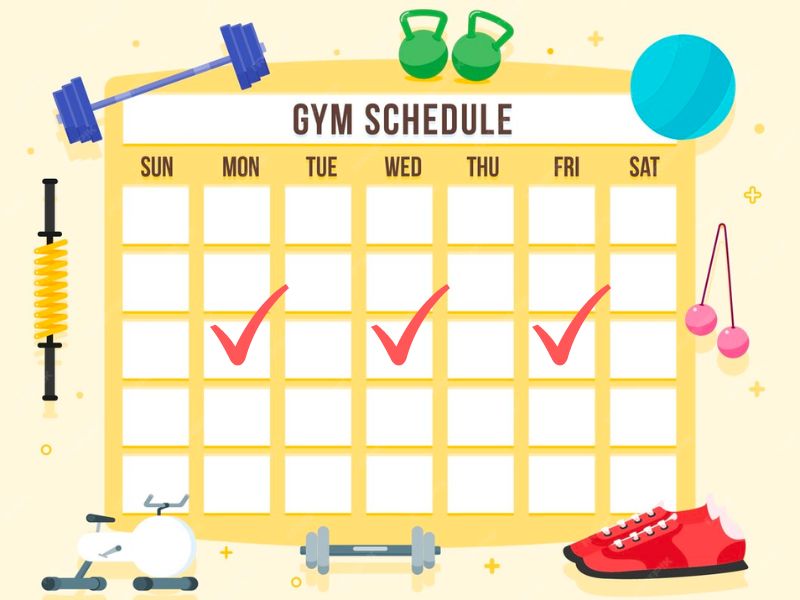
Consistency is the name of the game when it comes to strength training. To make progress and see results, it’s essential to establish a regular workout schedule that fits into your lifestyle.
Whether you prefer to hit the gym before work or squeeze in a quick home workout during your lunch break, find a time and routine that works for you and stick to it.
Aim to incorporate strength training exercises at least two to three times per week, allowing for adequate rest and recovery between sessions.
Remember, quality over quantity is key, so focus on performing each exercise with proper form and intensity rather than rushing through your workouts.
C. Sets and Reps for Beginners
As a beginner, it’s essential to understand the concept of sets and reps and how they contribute to your strength training routine.
A set refers to a group of consecutive repetitions (reps) of a particular exercise, while reps indicate the number of times you perform a specific movement within a set.
For beginners, a typical strength training routine might include two to three sets of 8-12 reps for each exercise. [*]
Start with a weight that allows you to complete the desired number of reps with proper form, gradually increasing the weight as you become stronger and more confident.
D. Frequency of Strength Training for Beginners
How often should beginners engage in strength training workouts?
While there’s no one-size-fits-all answer, most experts recommend aiming for at least two to three strength training sessions per week to see noticeable results.
This frequency allows for sufficient stimulus to promote muscle growth and adaptation while still allowing for adequate recovery between workouts.
Remember, rest and recovery are just as important as the workouts themselves. Give your muscles time to repair and rebuild by incorporating rest days into your routine and listening to your body’s signals.
Easy Strength Training Exercises for Beginners
A. Chest
Push-ups:
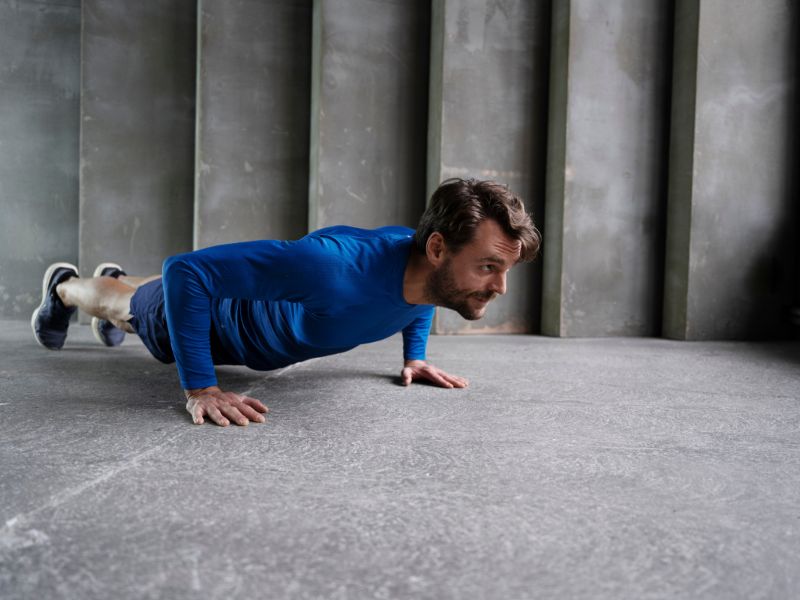
- Start in a plank position with hands shoulder-width apart.
- Lower your body until your chest nearly touches the ground.
- Push back up to the starting position.
- Aim for 2-3 sets of 8-10 reps.
Dumbbell Chest Press:

- Lie on a bench with dumbbells in hand, arms extended over your chest.
- Lower the dumbbells towards your chest, elbows forming a 90-degree angle.
- Press the dumbbells back up to the starting position.
- Aim for 2-3 sets of 10-12 reps.
Chest Flyes (Machine):

- Sit on a chest fly machine with handles in hand, arms extended in front.
- Bring the handles together in a controlled motion, squeezing your chest muscles.
- Return to the starting position with control.
- Aim for 2-3 sets of 10-12 reps.
Incline Dumbbell Press:
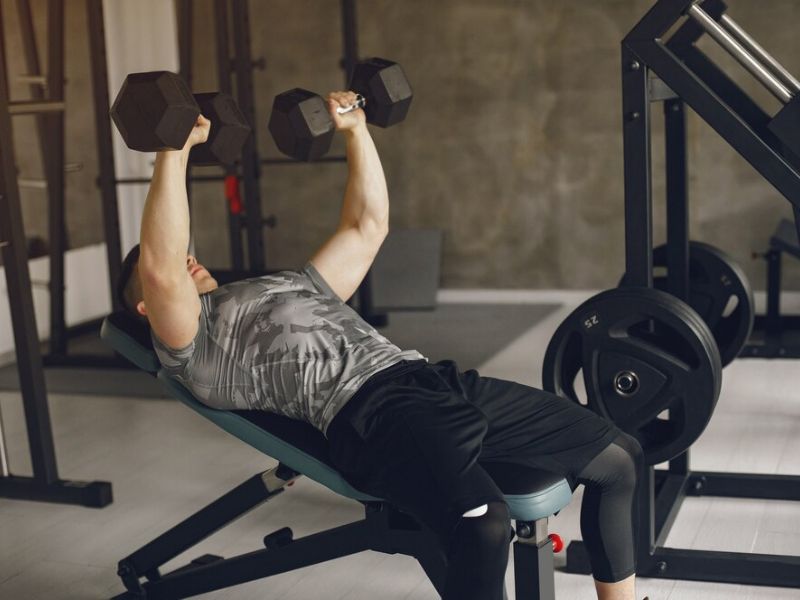
- Lie on an incline bench with dumbbells in hand, arms extended over your chest.
- Lower the dumbbells towards your chest, elbows forming a 90-degree angle.
- Press the dumbbells back up to the starting position.
- Aim for 2-3 sets of 10-12 reps.
an image showing a person doing push ups
Chest Dips (Assisted):

- Use parallel bars or a dip machine.
- Lower your body until your upper arms are parallel to the ground.
- Push back up to the starting position.
- Aim for 2-3 sets of 8-10 reps.
Cable Chest Press:

- Stand facing a cable machine with handles at chest height.
- Grab the handles and extend your arms in front of you.
- Bring the handles together, squeezing your chest muscles.
- Return to the starting position with control.
- Aim for 2-3 sets of 10-12 reps.
B. Back
Bodyweight Rows (Inverted Rows):
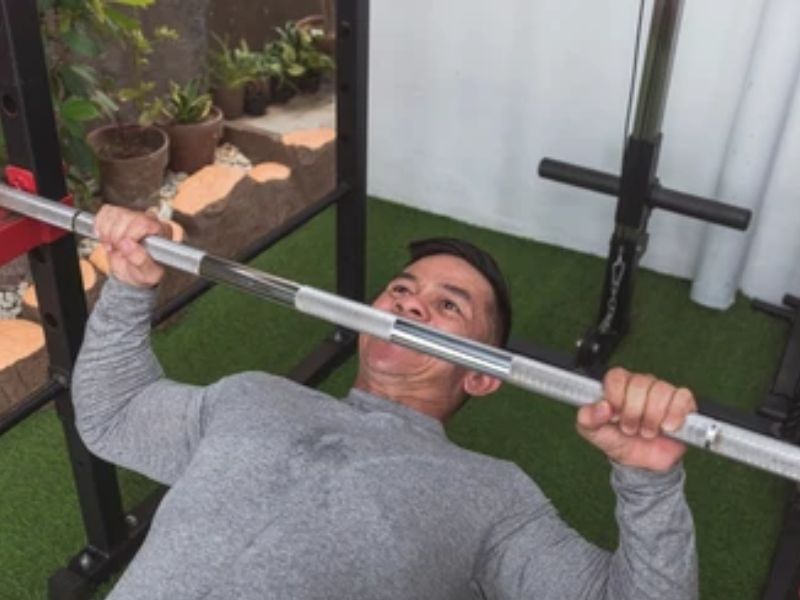
- Set up a bar at waist height.
- Hang underneath the bar with arms extended.
- Pull your chest towards the bar, squeezing your shoulder blades.
- Lower back down with control.
- Aim for 2-3 sets of 8-10 reps.
Dumbbell Rows:
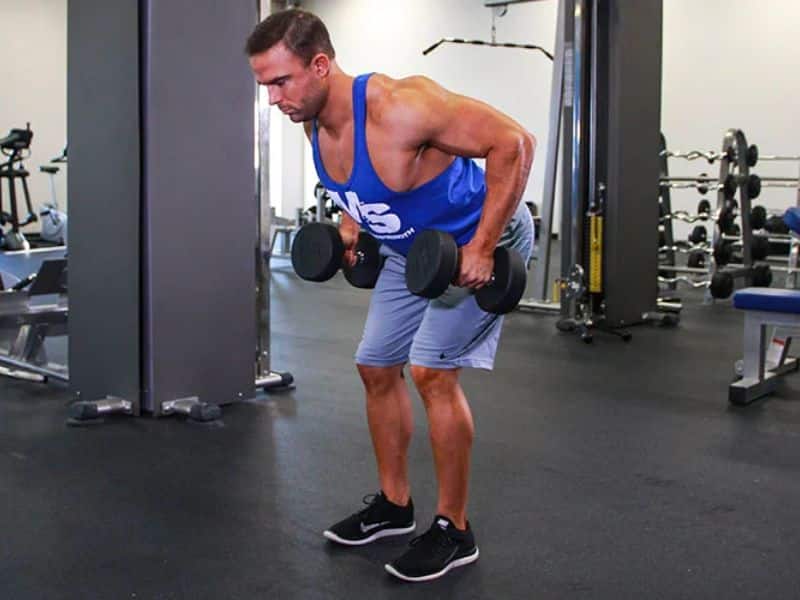
- Stand with a dumbbell in each hand, knees slightly bent.
- Hinge forward at the hips with a flat back.
- Pull the dumbbells towards your torso, squeezing your shoulder blades.
- Lower back down with control.
- Aim for 2-3 sets of 10-12 reps per arm.
Lat Pulldowns (Machine):

- Sit at a lat pulldown machine with a wide grip on the bar.
- Pull the bar down towards your chest, squeezing your lats.
- Slowly release the bar back up.
- Aim for 2-3 sets of 10-12 reps.
Seated Cable Rows:

- Sit at a cable row machine with your knees slightly bent and feet flat on the ground.
- Pull the handle towards your torso, squeezing your shoulder blades.
- Slowly release the handle back out.
- Aim for 2-3 sets of 10-12 reps.
T-Bar Rows (Machine):

- Straddle the T-bar row machine and grab the handles with a neutral grip.
- Pull the handles towards your torso, squeezing your back muscles.
- Slowly release the handles back out.
- Aim for 2-3 sets of 10-12 reps.
Single-Arm Dumbbell Rows:

- Stand with a dumbbell in one hand, opposite hand on a bench for support.
- Hinge forward at the hips with a flat back.
- Pull the dumbbell towards your torso, squeezing your shoulder blade.
- Lower back down with control.
- Aim for 2-3 sets of 10-12 reps per arm.
C. Shoulder
Dumbbell Shoulder Press:

- Sit on a bench with dumbbells in hand, palms facing forward.
- Press the dumbbells overhead until arms are fully extended.
- Lower the dumbbells back down to shoulder level.
- Aim for 2-3 sets of 10-12 reps.
Front Raises (Dumbbells):

- Stand with dumbbells in hand, palms facing your thighs.
- Lift the dumbbells directly in front of you until arms are parallel to the ground.
- Lower the dumbbells back down with control.
- Aim for 2-3 sets of 10-12 reps.
Lateral Raises (Dumbbells):

- Stand with dumbbells in hand, palms facing your thighs.
- Lift the dumbbells out to the sides until arms are parallel to the ground.
- Lower the dumbbells back down with control.
- Aim for 2-3 sets of 10-12 reps.
Shoulder Shrugs (Dumbbells):
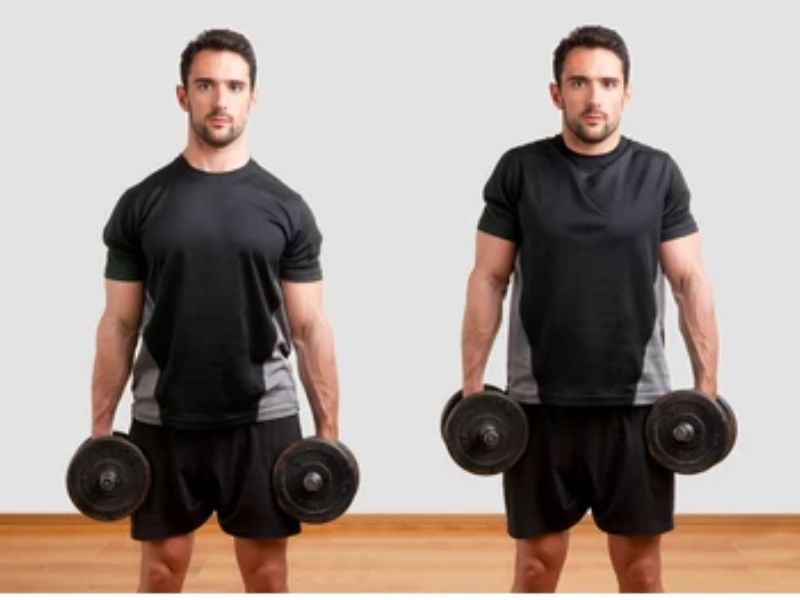
- Stand with dumbbells in hand, arms by your sides.
- Shrug your shoulders towards your ears, squeezing your traps.
- Lower your shoulders back down with control.
- Aim for 2-3 sets of 12-15 reps.
Barbell Shoulder Press:
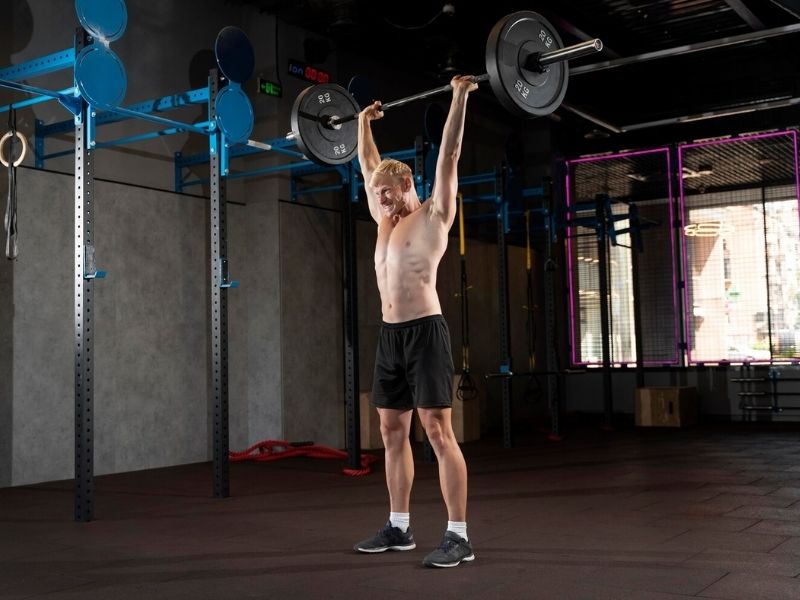
- Sit on a bench with a barbell racked at shoulder height.
- Grip the barbell slightly wider than shoulder-width apart.
- Press the barbell overhead until arms are fully extended.
- Lower the barbell back down to shoulder level.
- Aim for 2-3 sets of 10-12 reps.
Upright Rows (Dumbbells or Barbell):

- Stand with dumbbells in hand or grip a barbell with hands shoulder-width apart.
- Lift the dumbbells or barbell towards your chin, elbows pointing out.
- Lower the weights back down with control.
- Aim for 2-3 sets of 10-12 reps.
D. Arms
Bicep Curls (Dumbbells):

- Stand with dumbbells in hand, palms facing forward.
- Curl the dumbbells towards your shoulders, squeezing your biceps.
- Lower the dumbbells back down with control.
- Aim for 2-3 sets of 10-12 reps.
Tricep Dips (Bench or Chair):

- Sit on the edge of a bench or chair with hands gripping the edge.
- Extend your legs out in front of you.
- Lower your body until your arms form a 90-degree angle.
- Push back up to the starting position.
- Aim for 2-3 sets of 8-10 reps.
Hammer Curls (Dumbbells):

- Stand with dumbbells in hand, palms facing your body.
- Curl the dumbbells towards your shoulders, keeping your palms facing each other.
- Lower the dumbbells back down with control.
- Aim for 2-3 sets of 10-12 reps.
Tricep Kickbacks (Dumbbells):

- Stand with dumbbells in hand, palms facing your body.
- Hinge forward at the hips with a flat back.
- Extend your arms behind you, squeezing your triceps.
- Lower the dumbbells back down with control.
- Aim for 2-3 sets of 10-12 reps.
Barbell Bicep Curls:

- Stand with a barbell in hand, palms facing forward.
- Curl the barbell towards your shoulders, squeezing your biceps.
- Lower the barbell back down with control.
- Aim for 2-3 sets of 10-12 reps.
Skull Crushers (Dumbbells or Barbell):

- Lie on a bench with dumbbells in hand or grip a barbell with hands shoulder-width apart.
- Extend your arms overhead, elbows slightly bent.
- Lower the weights towards your forehead, keeping your elbows in.
- Press the weights back up to the starting position.
- Aim for 2-3 sets of 10-12 reps.
E. Legs
Bodyweight Squats:

- Stand with feet shoulder-width apart.
- Lower your body by bending your knees and pushing your hips back.
- Keep your chest up and back straight.
- Push through your heels to return to the starting position.
- Aim for 2-3 sets of 10-12 reps.
Dumbbell Lunges:
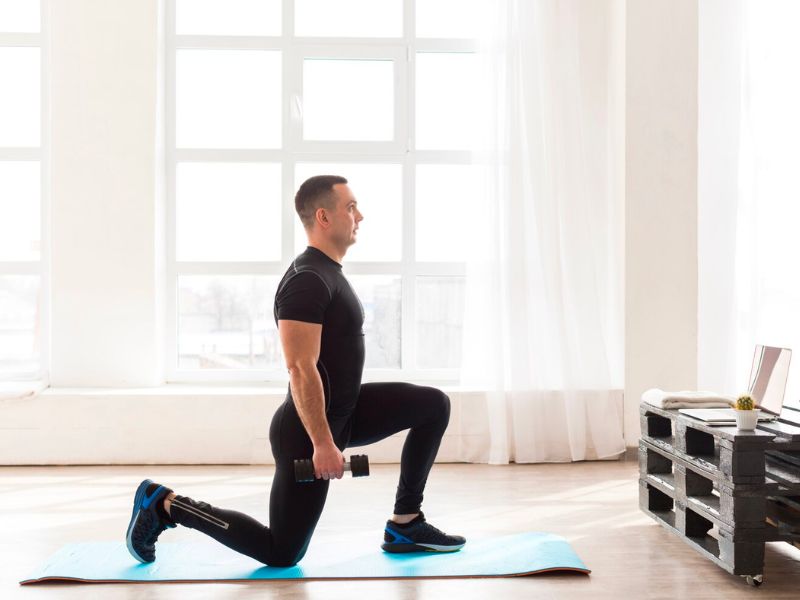
- Stand with dumbbells in hand, feet hip-width apart.
- Step one foot forward and lower your body until both knees are bent at a 90-degree angle.
- Push back up to the starting position and repeat on the other side.
- Aim for 2-3 sets of 10-12 reps per leg.
Leg Press (Machine):
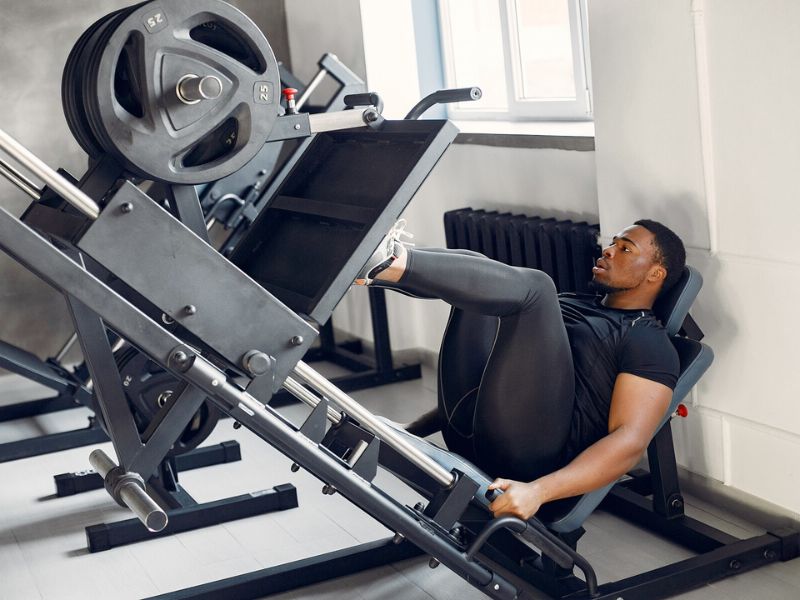
- Sit on a leg press machine with your feet shoulder-width apart on the platform.
- Push the platform away from you until your legs are fully extended.
- Slowly lower the platform back down with control.
- Aim for 2-3 sets of 10-12 reps.
Calf Raises (Dumbbells):
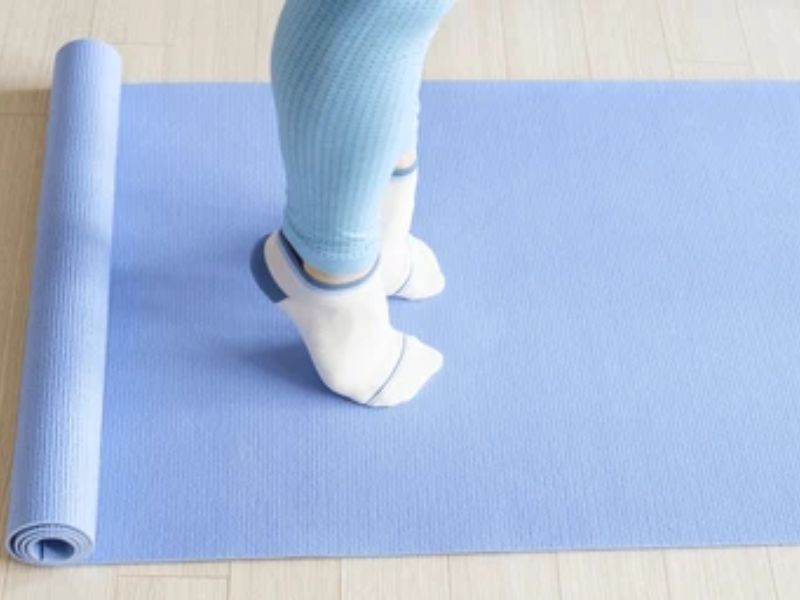
- Stand with dumbbells in hand, feet hip-width apart.
- Rise up onto the balls of your feet, squeezing your calf muscles.
- Lower back down with control.
- Aim for 2-3 sets of 12-15 reps.
Leg Extensions (Machine):
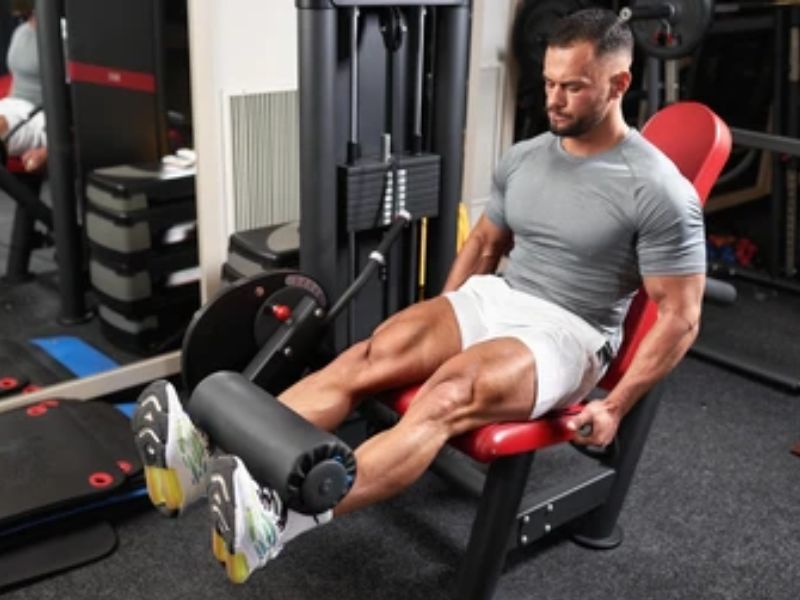
- Sit on a leg extension machine with your knees bent at a 90-degree angle.
- Extend your legs until they are straight, then lower back down with control.
- Aim for 2-3 sets of 10-12 reps.
Leg Curls (Machine):

- Lie face down on a leg curl machine with your knees off the edge.
- Curl your heels towards your glutes, squeezing your hamstrings.
- Lower back down with control.
- Aim for 2-3 sets of 10-12 reps.
Beginner-Friendly Strength Training Routines
A. Full-Body Workout Routine
This full-body workout routine is perfect for beginners who are just getting started with strength training. It targets all major muscle groups in a single session, making it efficient and effective.
- Warm-Up: Start with 5-10 minutes of light cardio to get your blood flowing and your muscles warmed up.
- Squats: 3 sets of 10-12 reps. Squats are excellent for targeting your lower body, including your quads, hamstrings, and glutes.
- Push-Ups: 3 sets of 8-10 reps. Push-ups work your chest, shoulders, and triceps while also engaging your core muscles.
- Dumbbell Rows: 3 sets of 10-12 reps per arm. Dumbbell rows target your back muscles, helping to improve posture and upper body strength.
- Dumbbell Shoulder Press: 3 sets of 10-12 reps. This exercise targets your shoulder muscles, helping to build strength and stability.
- Lunges: 3 sets of 10-12 reps per leg. Lunges are great for targeting your lower body muscles while also improving balance and coordination.
- Planks: Hold for 30-60 seconds. Planks engage your core muscles, helping to improve core strength and stability.
- Cool Down: Finish with 5-10 minutes of stretching to help improve flexibility and reduce muscle soreness.
B. Split Routine (Upper/Lower Body)
If you prefer to split your workouts into upper and lower body sessions, this routine is for you. It allows for more focus on specific muscle groups while still providing adequate rest between sessions.
Upper Body Day:

- Warm-Up: 5-10 minutes of light cardio.
- Dumbbell Chest Press: 3 sets of 10-12 reps.
- Dumbbell Rows: 3 sets of 10-12 reps per arm.
- Dumbbell Shoulder Press: 3 sets of 10-12 reps.
- Push-Ups: 3 sets of 8-10 reps.
- Bicep Curls: 3 sets of 10-12 reps.
- Tricep Dips: 3 sets of 8-10 reps.
- Cool Down: 5-10 minutes of stretching.
Lower Body Day:

- Warm-Up: 5-10 minutes of light cardio.
- Squats: 3 sets of 10-12 reps.
- Lunges: 3 sets of 10-12 reps per leg.
- Deadlifts: 3 sets of 10-12 reps.
- Glute Bridges: 3 sets of 12-15 reps.
- Calf Raises: 3 sets of 12-15 reps.
- Leg Press: 3 sets of 10-12 reps.
- Cool Down: 5-10 minutes of stretching.
Precautions and Injury Prevention Strategies for Beginners
A. Warm-up and Cool-down Exercises

Before diving into your strength training routine, it’s crucial to prepare your body with a proper warm-up. This helps increase blood flow to your muscles, improves flexibility, and reduces the risk of injury. Some effective warm-up exercises include:
- Jumping jacks
- Arm circles
- Leg swings
- Hip rotations
- Shoulder rolls
After completing your workout, don’t forget to cool down with some gentle stretching exercises. This helps relax your muscles, prevent stiffness, and promote recovery. Incorporate stretches for all major muscle groups, holding each stretch for 15-30 seconds.
B. Proper Form and Technique

One of the most common causes of injury in strength training is improper form and technique.
Picture this: you’re attempting a heavy deadlift with rounded shoulders and a curved spine. Not only are you putting yourself at risk of back injury, but you’re also compromising the effectiveness of the exercise.
It’s essential to prioritize proper form and technique above all else, even if it means lifting lighter weights initially.
Focus on mastering the correct movement patterns for each exercise, engaging the target muscles, and maintaining a stable and neutral spine throughout.
C. Listening to Your Body
Your body is incredibly intuitive – it has a way of letting you know when something isn’t quite right. Whether it’s a twinge in your knee during a squat or a sharp pain in your shoulder during a bench press, it’s crucial to listen to these warning signs and adjust your training accordingly.
Ignoring pain or discomfort can lead to serious injury and setbacks in your fitness journey. Instead, pay attention to how your body feels during exercise, and don’t hesitate to modify or skip certain movements if something doesn’t feel right.
D. Gradual Progression

It’s tempting to dive headfirst into intense workouts and heavy lifting right out of the gate, but this approach can spell disaster for beginners. Instead, focus on gradual progression, gradually increasing the intensity, duration, and complexity of your workouts over time.
So, start with lighter weights and fewer repetitions, gradually increasing the resistance and volume as your strength and confidence improve.
Remember, Rome wasn’t built in a day – patience and consistency are key to long-term success in strength training.
E. Staying Hydrated and Well-nourished

Proper hydration and nutrition are essential components of injury prevention in strength training. Dehydration can impair muscle function, reduce exercise performance, and increase the risk of cramps and injury during workouts.
Ensure you’re drinking an adequate amount of water throughout the day, especially before, during, and after exercise, to stay hydrated and support optimal performance.
Additionally, fuel your body with a balanced diet rich in protein, carbohydrates, and healthy fats to provide the energy and nutrients needed for muscle repair and recovery.
F. Incorporating Rest Days into the Routine

Finally, let’s talk about the importance of rest and recovery in injury prevention. While it’s tempting to hit the gym seven days a week in pursuit of your fitness goals, overtraining can lead to burnout, fatigue, and increased risk of injury.
Make sure to incorporate rest days into your training schedule to allow your muscles time to repair and rebuild. Rest days are just as crucial as workout days – they give your body a chance to recover, recharge, and come back stronger than ever.
Conclusion
Congratulations on completing our beginner’s guide to strength training. You now grasp the fundamentals and benefits of strength training, along with essential exercises for each muscle group.
To kickstart your journey, set realistic goals, establish a consistent workout schedule, and choose an environment that suits you. Remember to prioritize proper form and listen to your body to prevent injuries.
Now, armed with knowledge and determination, it’s time to embark on your path to strength and fitness. Stay consistent, be patient, and enjoy the journey to a stronger, healthier you.


Stumbling upon this website was such a delightful find. The layout is clean and inviting, making it a pleasure to explore the terrific content. I’m incredibly impressed by the level of effort and passion that clearly goes into maintaining such a valuable online space.
Thank you for your response! I’m grateful for your willingness to engage in discussions. If there’s anything specific you’d like to explore or if you have any questions, please feel free to share them. Whether it’s about emerging trends in technology, recent breakthroughs in science, intriguing literary analyses, or any other topic, I’m here to assist you. Just let me know how I can be of help, and I’ll do my best to provide valuable insights and information!